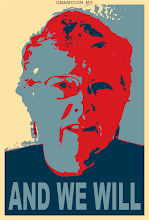How British, Cherokees Saw Each Other
WASHINGTON (AP) -- The British and Cherokee nations, each finding the other strange and curious, sought peace when they sent delegates to each other in 1762. A new exhibit details both sides, through the eyes of the other.
''Emissaries of Peace: The 1762 Cherokee and British Delegations,'' opened Wednesday at the Smithsonian's National Museum of Natural History and will remain on display until Nov. 25.
British diarist Henry Timberlake spent three months living with the Cherokees in North Carolina and Tennessee, recording his impressions.
And three Cherokee leaders traveled to London to view British society and meet with King George III.
Longtime trading partners and allies during the French and Indian War, the British and Cherokees had briefly battled one another, and both sides wanted to settle matters and get back to trading. The British also sought Cherokee assistance as a counterbalance to French influence.
Swords, a musket and pottery illustrate lifestyles of the time. British and Indian clothing, beads and baskets, a pocket watch and spectacles reveal two cultures, together and apart.
There were differences:
Timberlake's diary records surprise that the Cherokee ''allow their women full liberty, without fear of punishment.''
Cherokee leader Attakullakulla asks, since ''white men as well as red were born of women (is it) not the custom of the white people also'' to admit their women into the council?
Timberlake records that Cherokee government is a mix of aristocracy and democracy with leaders chosen by merit.
Cherokee Ostenaco notes that the king ''commands over all next to the Man Above, and nobody is his equal.''
There was also courtesy in common:
Timberlake reports he was received in a ''very kind manner'' by the ''hospitable tho' savage people.''
Likewise, Ostenaco notes that ''the head warrior of the canoe who brought us over the wide water used us very well.''
The exhibit was prepared by the Museum of the Cherokee Indian in North Carolina and was supported by National Endowment for the Humanities.


Links to this post:
Create a Link
<< Home